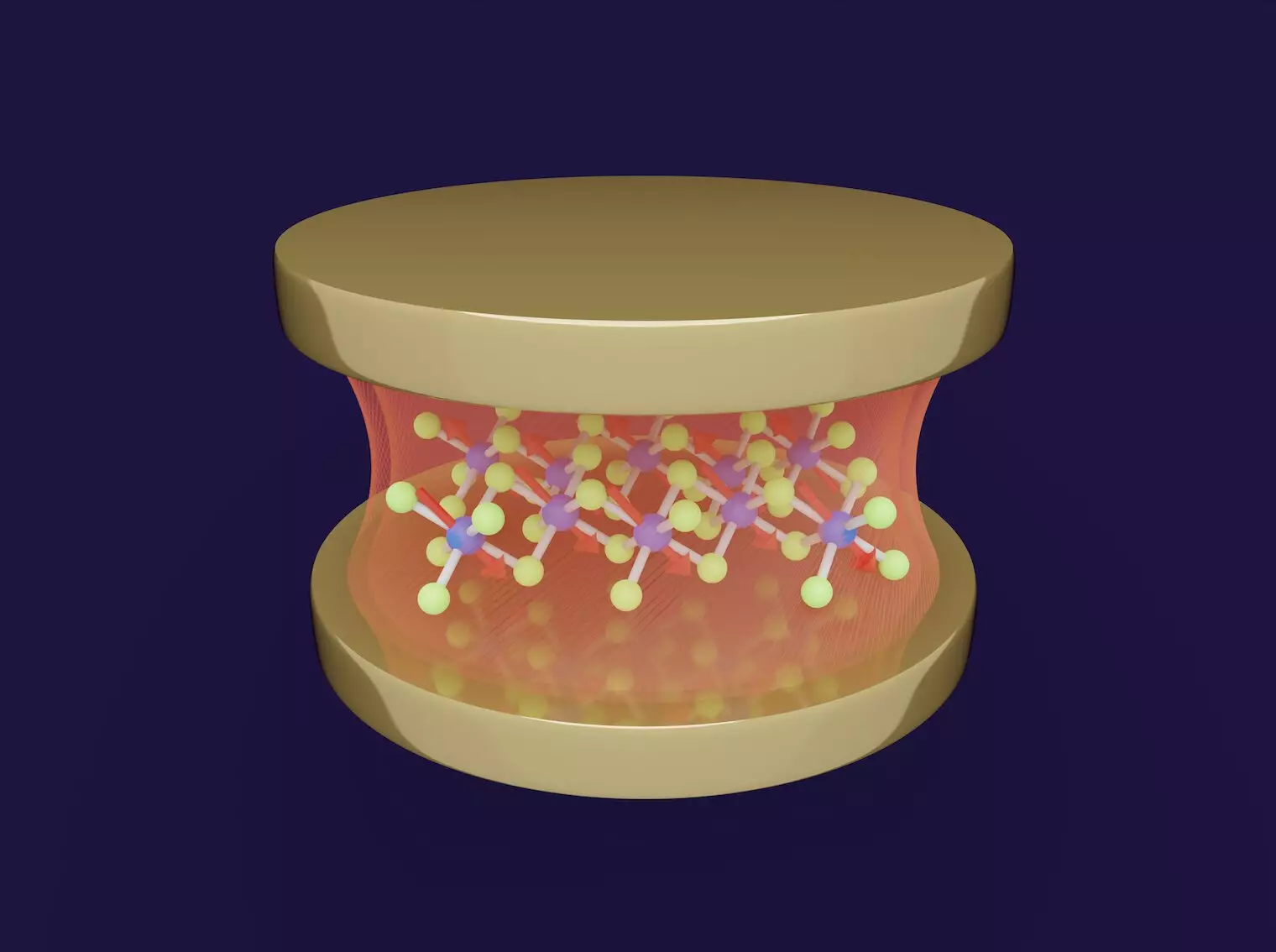In a collaborative effort, researchers from the Max Planck Institute for the Structure and Dynamics of Matter in Germany, Stanford University, and the University of Pennsylvania in the United States have made a groundbreaking theoretical breakthrough. They have successfully demonstrated that the magnetic properties of an atomically thin material, α-RuCl3, can be controlled solely by placing it into an optical cavity. This achievement is significant as it introduces a new method of manipulating material properties without the need for intense lasers, which often introduce practical problems such as excessive heating. The researchers achieved this by harnessing the power of cavity vacuum fluctuations, which alter the material’s magnetic order from a zigzag antiferromagnet to a ferromagnet.
The existing approach to modifying the properties of magnetic materials involves the use of intense laser light. By carefully engineering the properties of the laser light, researchers can bring about significant changes in the electrical conductivity and optical properties of various materials. However, this method requires continuous stimulation by high-intensity lasers, leading to several practical challenges. One of the main concerns is the difficulty of preventing the material from heating up. As a result, researchers are seeking alternative ways to achieve similar control over materials using light, but without relying on intense lasers.
The recent collaborative study introduces a fundamentally different approach to changing the magnetic properties of real materials by utilizing an optical cavity. The researchers demonstrate that the cavity alone has the power to transform the zigzag antiferromagnet α-RuCl3 into a ferromagnet. This groundbreaking discovery unveils the fact that even within a seemingly dark cavity, the electromagnetic environment can subtly modify the material’s magnetic state. This effect is rooted in quantum mechanics, where the cavity’s vacuum state is never truly empty. Instead, fluctuations in the light field cause particles of light to continuously appear and disappear. These fluctuations subsequently impact the properties of the material.
Lead author Emil Viñas Boström, a postdoctoral researcher in the MPSD Theory Group, highlights the significance of confining the electromagnetic field within a small volume through the optical cavity. This confinement enhances the interaction between the light and the material, leading to drastic changes in its magnetic properties. The striking aspect of this approach is that it does not require any light excitation, effectively sidestepping the challenges associated with continuous laser driving. This work marks the first successful demonstration of cavity control over magnetism in a real material, following prior investigations into cavity control of ferroelectric and superconducting materials.
The researchers are optimistic that by designing specific cavities, they can unlock new and elusive phases of matter. These specialized cavities hold the potential to enable the realization of previously unexplored material properties and foster a deeper understanding of the intricate interplay between light and matter. The ability to achieve magnetic control through cavity vacuum fluctuations opens up exciting possibilities for the field of material physics, offering a novel avenue for controlling and manipulating material properties without the drawbacks of intense laser-based modification.
The recent research breakthrough by researchers from Germany and the U.S. demonstrates the remarkable potential of utilizing cavity vacuum fluctuations to achieve magnetic control in materials. Their work introduces a fundamentally different approach, which does not rely on the use of intense lasers, to modify the magnetic properties of real materials. By harnessing the power of the optical cavity, the researchers successfully transformed α-RuCl3 from a zigzag antiferromagnet to a ferromagnet. This discovery paves the way for the design of specific cavities that can uncover new phases of matter and deepen our understanding of the complex interactions between light and matter. The ability to manipulate material properties without the limitations posed by intense lasers opens up exciting possibilities for future research and applications in the field of material physics.


Leave a Reply